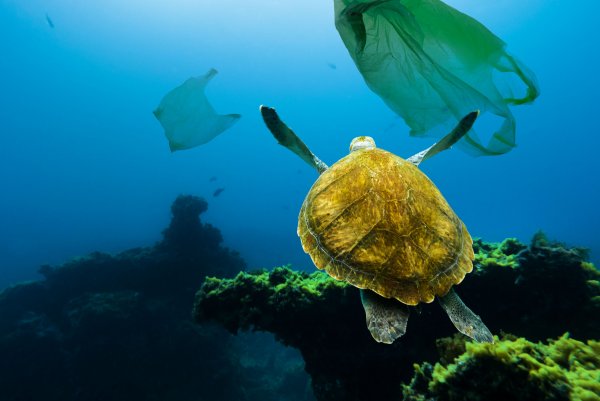Plastic Is Everywhere, Even The Deepest Parts Of Our Planet!
Tags: opinion

By Mayukh Saha / Truth Theory
As unfortunate as it is, it is not news for us to know that plastic is a giant threat to oceanic life and to the entire world we inhabit. In March, a whale died of toxic shock from ingesting 40 kgs of plastic and washed up on a Philippine shore. It only adds to several more stories talking about the devastating impact of plastic.
Microplastics are ingested by all sorts of animals, from fish to birds to planktons. More often than not, it results in their death due to the accumulation of plastic in their systems. This very problem also seems to have a very far-reaching consequence, not thought of earlier, as per the reports of a group of scientists researching at the University of Newcastle. Microplastics have made their way into the deepest parts of our oceans.
Dr Alan Jamieson, the leader of the Sky Ocean Rescue Project collected several crustaceans from six separate deep-ocean trenches.
The study examined several places on the planet, such as the Japan Trench, Atacama Trench, Mariana Trench, Kermadec Trench, and the New Hebrides Trench.
Upon the completion of the study, which has been published in the Royal Society Open Science, the scientists derived very unfortunate results.
Of all the crustaceans that were a part of the study, 72% had ingested plastic which was found in their stomachs.If that was not unfortunate enough, the further the study delved into, the amount of plastic discovered increased. The study found that of all the study subjects, 100% of them had plastic elements in them.
As per Alan Jamieson in the Newcastle University press release, the study has made significant contributions towards the fact that human-made microfibers are finding their way into the habitat of marine life not well understood by humans. It is also not possible to observe their habitats experimentally which has led to the failure of obtaining any data to better understand the contamination pattern.
It is also not very likely that marine ecosystems without human waste are in existence anymore. The deepest trench on the planet, the Mariana Trench, was also found to contain plastic bags last year.
As per Jamieson in another press release, it is more than obvious that the last resting place for all our undisposed and untreated waste is the ocean. It is an established fact that, regardless of the size and composition of the debris, a lot of our waste finds its way into the ocean. Polluted rivers can be cleaned by flushing it with fresh water; polluted coastlines are taken care of by tides but when it comes to the deepest parts of the giant water bodies, the waste just stays there.
After reaching the seafloors, the waste has absolutely no other place to move. Hence, it is presupposed that this will only lead to further accumulation – which is a profoundly worrying result.
Over 5000 people have downloaded our free ebook “Growth Hacking Tips And Rituals For Optimal Living” CLICK HERE to get your free copy now
The very instant that plastic is discovered in the digestive tracts of animals in several places in the world substantiate the fact that this is a global epidemic.
As per this University of Georgia study, humans have manufactured 8.4 billion tons of plastics in almost 7 decades.
Out of those 8.4 billion tons, 6.4 billion tons are still sitting in our landfills or contaminating our ecosystems.
The further one thinks of this, the more saddening it becomes, Jamieson said.
It is important for us to do small things which save the planet that little bit of harm, such as not using plastic straws and lessening our use of single-use plastics. Did you know if you use one biodegradable bamboo straw even for a year, it can save at least 90 – 120 plastic straws in a year. We hope that you can make a change, even if it is a small one to curb the destruction of our planet.
Image Credit: 123RF
Leave Comment: